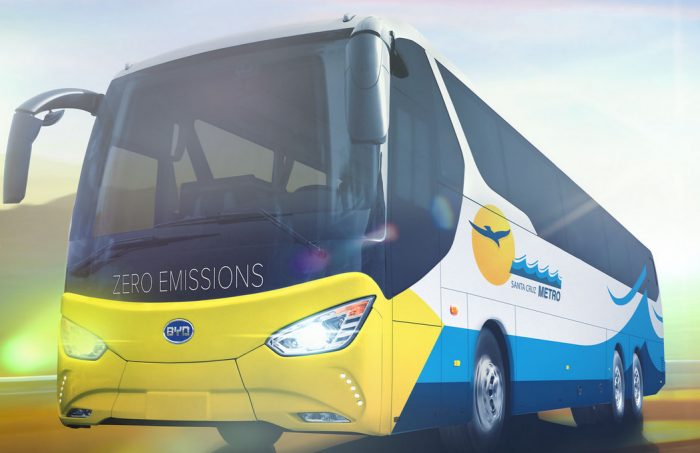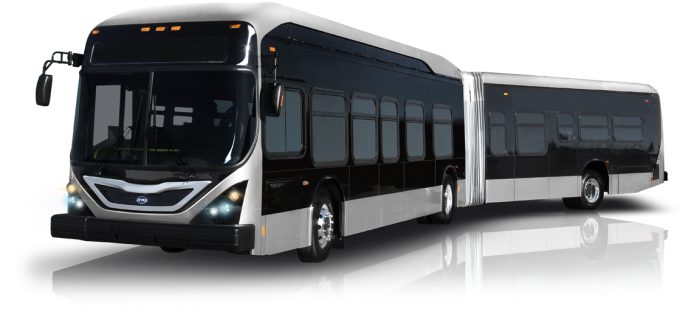On Friday, BYD officially opened its expanded battery-electric bus manufacturing facility in the U.S. city of Lancaster in southern California – and it’s fully powered by renewable energy.
The expansion of the Coach and Bus space has seen the facility grow to nearly 41,800 square metres – close to quadruple its initial 2013 size. The expanded facility will enable BYD to build up to 1,500 battery-electric buses annually and also provide an employment bonanza, with up to 1,200 full-time jobs at the facility.
The facility also supports R&D and assembly for BYD’s battery-electric medium- and heavy-duty trucks.
“The City of Lancaster is proud to have paired our progressive efforts with an equally bold and visionary partner – Build Your Dreams,” said Lancaster Mayor R. Rex Parris. “Our many successful achievements together, have contributed to the City’s steady rise as a frontrunner in the alternative energy arena.”
The renewable energy used to run the Coach and Bus line is provided by the City of Lancaster’s utility, Lancaster Choice Energy. The utility sources renewables primarily in the forms of wind and solar power. In 2015, the City became the first municipality in Southern California Edison’s region to form a Community Choice Aggregator and its own utility service provider,
BYD is the world’s largest manufacturer of electric vehicles and says it has more than 27,000 buses operating around the world that have collectively clocked up more than 213 million kilometres of revenue service. It has delivered 137 electric buses in the U.S. and Canada, with more than 75 delivered in 2017. The company says it has an additional 300 buses on order and options for more than 300 additional electric bus purchases.
In terms of all-electric trucks, BYD says it will have delivered 70 to its North American customers by the end of this year, with 140+ orders for trucks to date.
The largest bus produced by BYD is the 18-metre K11. It has a top speed of 90 kmh, a range of 320 kilometres and a charging time of three hours.
The K1 has a lithium iron-phosphate (LiFePO4) battery bank with a capacity of 591 kilowatt hours – around the equivalent of 44 Tesla Powerwall 2 batteries. LiFePO4 is considered the safest lithium chemistry due to its comparatively low risk of thermal runaway.
In other news from the firm over the past month, the company announced the inking of a multi-million dollar BYD solar panel supply contract and the installation of its first high voltage B-Box battery system in September.



 RSS - Posts
RSS - Posts



?
27,000 buses with a combined distance travelled of 2,130,000 km. doesn’t equate to a particularly large distance per bus.
Is that a typo just missing 3 digits.
Hi Chris, thanks for flagging this. This was an error on my part. It should have been 213 million kilometres. The post had been updated.